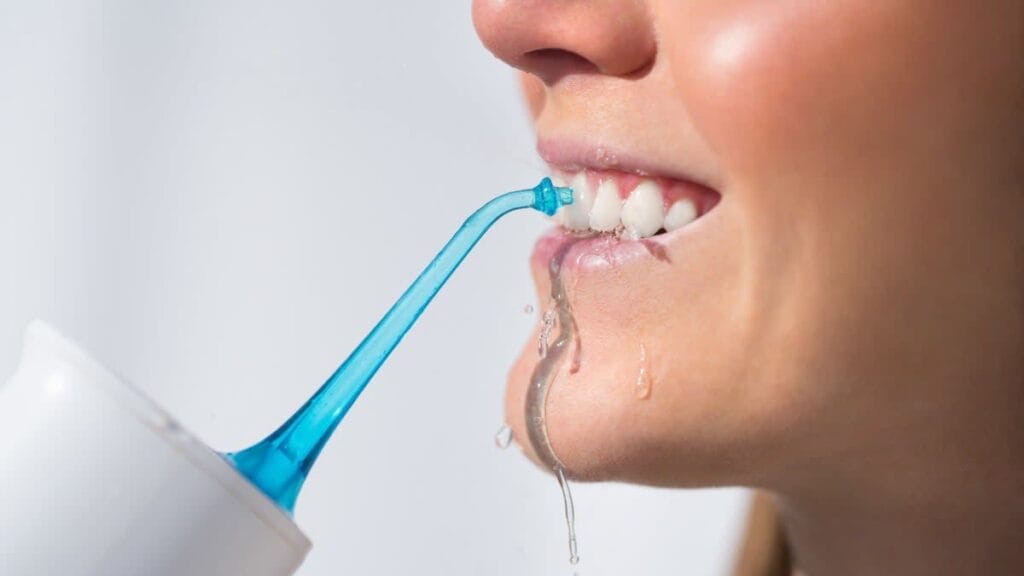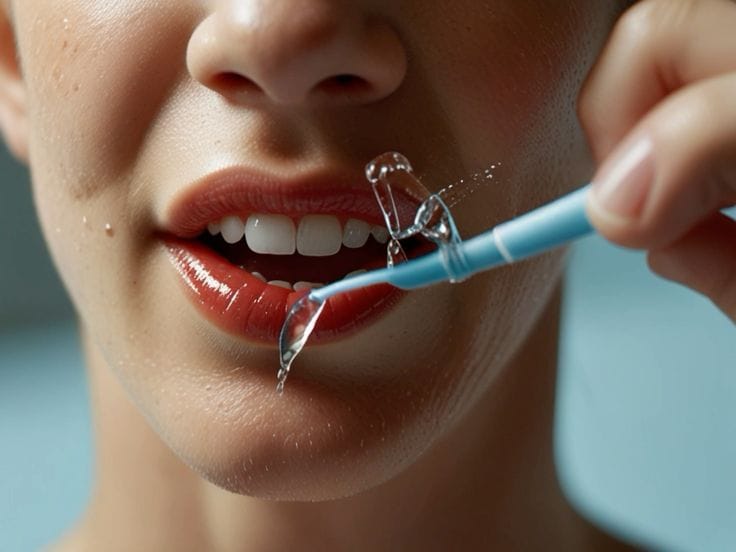In the world of dental care, regular cleaning of gums and teeth is a crucial part of maintaining oral health. While brushing is a traditional and widely used method, the question remains: is brushing alone enough? In this context, both water flosser vs traditional floss have emerged as complementary tools to enhance oral health. However, with so many options available, such as traditional dental floss versus a water flosser, it can be challenging to decide which is better. This article explores the key differences between flossing and flossing, highlighting how each contributes to improving oral health and maintaining healthy teeth, backed by scientific research and expert opinions from dental professionals.
What Is Flossing and Why It Matters
Flossing involves a simple yet essential method for protecting your dental hygiene. When you floss between your teeth daily, you help remove food particles and plaque that your toothbrush can’t reach. This reduces your risk of gum disease and supports better dental health. Adding flossing to your daily care is crucial to maintaining long-term oral wellness.
Flossing Tools: Traditional and Modern Options
Floss and water flossers both offer unique benefits. Traditional dental floss like string dental floss or unwaxed dental floss scrapes plaque effectively from tight spaces. Many people like to floss using waxed floss or floss threader devices, especially if they have trouble flossing. On the other hand, floss and a water flosser can work together to enhance cleanliness. If you’re unsure, try waxed floss or find water flossing more suitable.
🦷 Did you know?
Water flossing reduces gingivitis more effectively than traditional flossing, with a 51% reduction compared to 30%.
How Does a Water Flosser Work?

A water flosser, also known as a dental water jet or oral irrigator, uses a pressurized stream of water to clean tight areas between teeth and below the gum line. That’s because water can flush out debris from places traditional string floss may miss. Using a waterpik water flosser helps in plaque removal with minimal discomfort. When you use water to remove food trapped around dental work, you’re supporting a deeper level of dental care.
Water Flosser vs Traditional Floss: Key Differences
In the discussion of water flosser vs traditional floss, each has pros and cons. Traditional flossing removes plaque through direct contact, while water flossers are more effective in rinsing food and bacteria from difficult-to-reach places. Studies found that water flossing removes more debris than manual flossing, particularly in those with gum disease. Waterpik vs traditional dental floss comparisons show that water flossers are easier to use and more comfortable for many.
Benefits of Using Water Flossing
Water flossers are also recommended for patients with braces or dental work. The stream of water between your teeth dislodges particles where regular floss fails. Try water flossing if you’ve had trouble flossing manually. Water flossing removes buildup gently, making it easier to use and more pleasant for daily flossing. Dental hygienists often suggest you use water flossing as part of a comprehensive oral care routine.
💧 Did you know?
Water flossers are great for people with braces or implants, as they clean effectively between teeth and around dental work.
Which Method Is Better for Oral Health?
Determining whether to use string floss or a water flosser depends on personal comfort and dental needs. People with dental implants, gum disease, or dental work that makes flossing difficult might find water flossing better than flossing with string. A water flosser might help reduce inflammation and bleeding. Whether you floss or brush first, the goal is to improve oral health through consistent practice.
Combining Methods for Best Results
Many dentists advocate for string floss flosser use in tandem. This approach combines the mechanical action of floss in removing plaque with the flushing capability of water to clean more thoroughly. Floss in removing buildup and water to clean debris can create optimal results. This makes brushing and flossing, when paired with water flossing, better for cleaning and preventing oral disease.
Special Use Cases and Recommendations

For those with braces or tooth work, a dental water jet offers effective cleaning without irritation. Water jets or oral irrigators can reach behind wires or fixtures where floss gets stuck. Dental water solutions are useful for complex needs. Even if you replace traditional flossing with water flossing occasionally, you’re still promoting dental hygiene. If you use string floss regularly, continue—but don’t hesitate to try water flossing too.
Final Thoughts: Choosing What Works for You
Floss and water form a powerful duo for protecting your oral and dental health. Water flossers remove what traditional floss can’t, and floss can remove buildup left behind by water jets. Use water flossing as part of Tooth care, especially if you’re prone to periodontal diseases and Tooth caries. Maintain regular toothbrushing and flossing habits, and consult a dental hygienist or dentist for tailored advice.
🧵 Did you know?
Some studies show traditional flossing may not remove as much plaque, leading experts to recommend water flossing for better results.
Frequently Asked Questions about Water Flosser vs Traditional Floss
Is a water flosser better than traditional flossing?
Water flossers are more effective for some individuals, especially those with Tooth work or braces. They use a pressurized stream of water to remove plaque and food particles, making them easier to use and often more effective in hard-to-reach areas. Traditional flossing is still valuable, but a water flosser might be a better choice for certain needs.
Is a water flosser as effective as flossing?
Water flossers are just as effective, if not more, than traditional floss in some cases. Studies show water flossing removes plaque more effectively, especially around Tooth work and deeper gum lines. However, combining both methods may yield the best results.
What are the disadvantages of a water flosser?
Water flossers can be less portable and require a power source, unlike traditional floss. They may also miss some plaque in tight spaces between teeth. For maximum effectiveness, they’re often best used alongside string floss.
Why is flossing no longer recommended?
Recent studies question the effectiveness of traditional flossing, especially in tight spaces. Water flossers, like Waterpik, are gaining favor for their ability to clean around tooth work and deeper gum lines more effectively. Despite this, many dental professionals still recommend flossing as part of a complete oral hygiene routine.
Ultimately, the choice between Classic flossing and using a water flosser comes down to personal preference and specific dental needs. Whether you opt for the classic method of string floss or the modern convenience of a water flosser, both offer unique benefits in the battle against plaque and gum disease. The most important thing is to make flossing a regular part of your daily oral care routine. After all, healthy teeth and gums are essential for a confident smile and overall well-being. So, why not try both methods and see which one works best for you? Your smile will thank you!
Read also about Laser Teeth Whitening